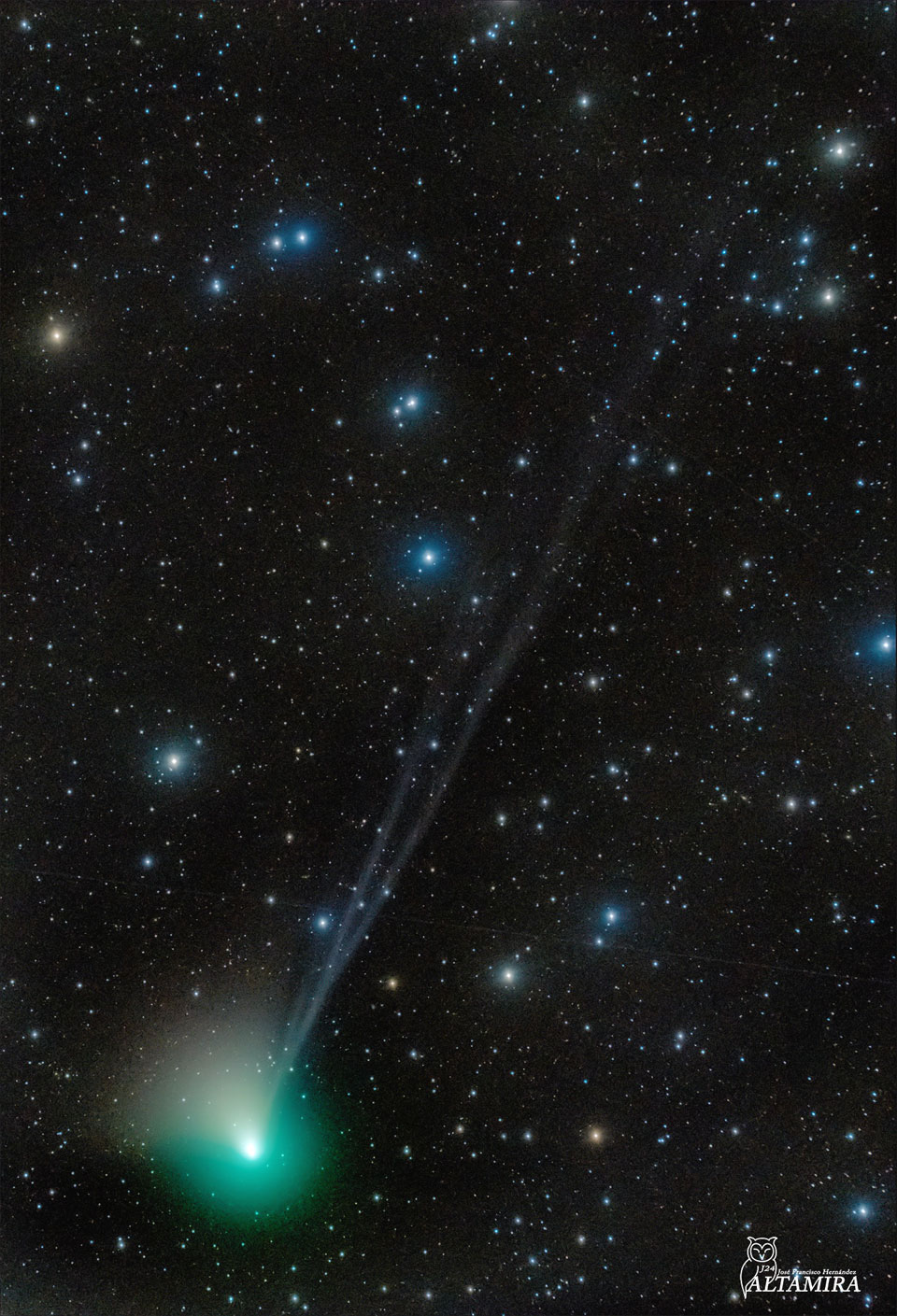2023年1月9日
Tails of Comet ZTF
Image Credit & Copyright: Jose Francisco Hernández
Explanation: Comet ZTF may become visible to the unaided eye. Discovered early last year, this massive snowball has been brightening as it approaches the Sun and the Earth. C/2022 E3 (ZTF) will be closest to the Sun later this week, at which time it may become visible even without binoculars to northern observers with a clear and dark sky. As they near the Sun, comet brightnesses are notoriously hard to predict, though. In the featured image taken last week in front of a picturesque star field, three blue ion tails extend to the upper right, likely the result of a variable solar wind on ions ejected by the icy comet nucleus. The comet’s white dust tail is visible to the upper left and much shorter. The green glow is the comet’s coma, caused by glowing carbon gas. Comet ZTF is expected to pass nearest the Earth in early February, after which it should dim dramatically.
Discovery + Outreach: Graduate student research position open for APOD
Tomorrow’s picture: interstellar cone
ZTF彗星的彗尾
图像提供与版权: Jose Francisco Hernández
说明: ZTF彗星或许会增亮到肉眼可见。发现于去年初的这颗大雪球,在往太阳与地球靠近的旅程中持续增亮。彗星C/2022 E3(ZTF)将在本周末来到最接近太阳的位置,届时即使没借助双筒望远镜,北半球的观星人或许也能在清朗幽暗的夜空中见到它的身影。不过得特别强调的:彗星在太阳附近的亮度,是出了名的难以预测。在这幅摄于上星期、以美丽星场为衬托的主题图像里,可见到3道向右上角伸展的泛蓝离子尾,而它们可能是冰质彗星核排出的离子受到多变太阳风作用的产物。彗发泛绿的色泽,源自碳气体的辐射。而从彗发向左上伸展的,则是这颗彗星短短的泛白尘尾。ZTF彗星预计在2月初会来到最近地球位置,之后它应该会快速变暗。
探索+拓展: APOD研究生研究职位空缺
明日的图片: interstellar cone



